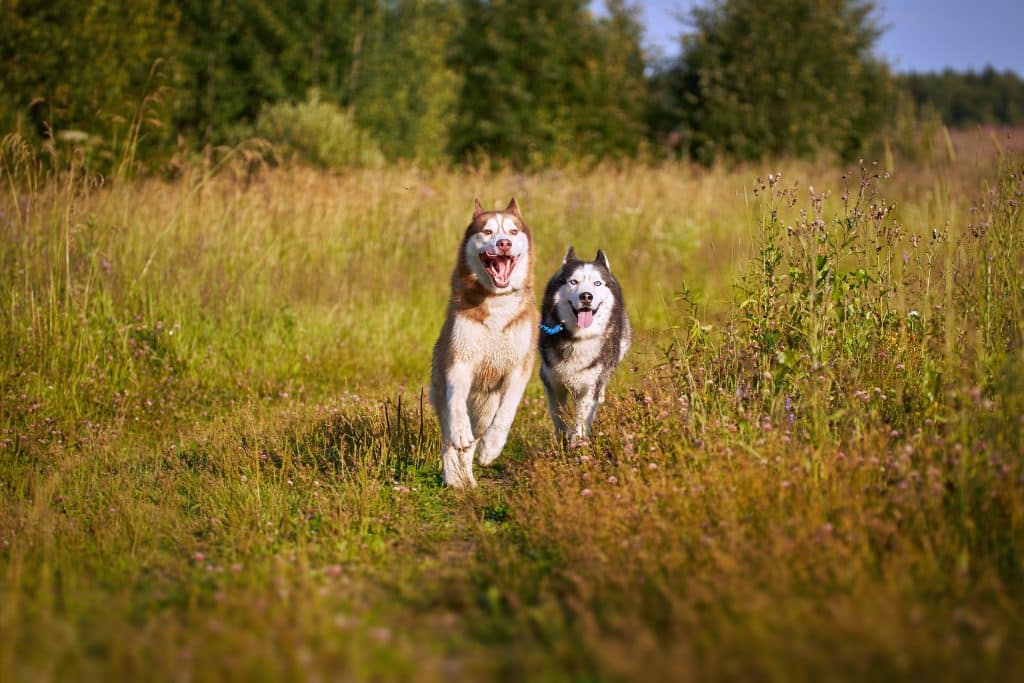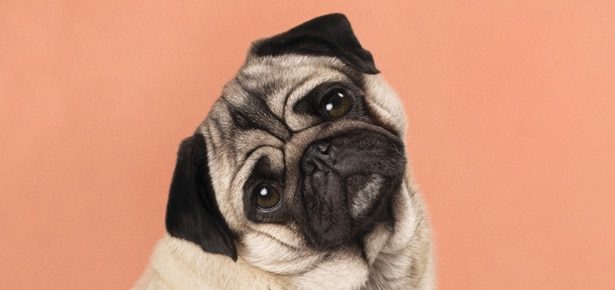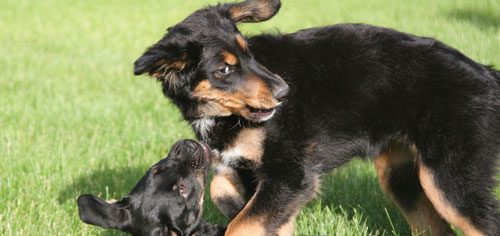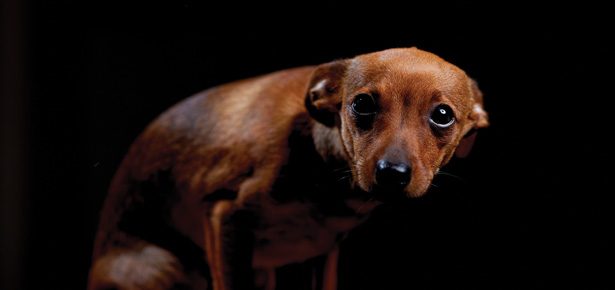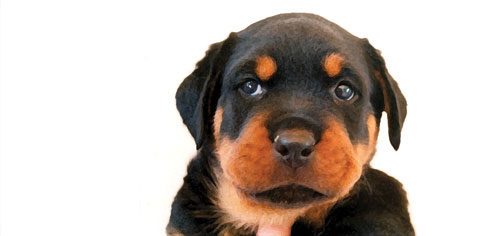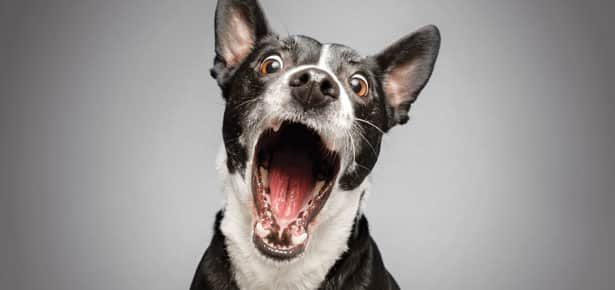
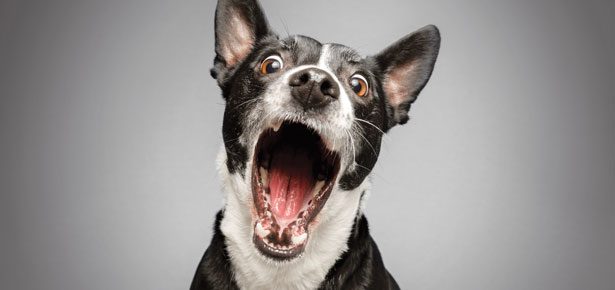
How to Calm an Overly Excited Dog
Restore calm with this one easy-to-teach cue
- “Out of nowhere, he starts racing around like a crazy dog!”
- “The kids want to play with her, but she gets so excited she won’t stop nipping!”
- “She keeps jumping on everyone and can’t seem to calm down!!”
Does any of this sound familiar? As a trainer, I hear these types of comments not only from puppy owners, but from owners of adolescent and adult dogs as well. To understand how to calm an overly excited dog, we first must understand why the dog is behaving the way he is.
Is it just the “zoomies?”
First, there are the “zoomies.” With my previous dogs, we used to laughingly refer to those sudden bursts of energy as the “couch races” because our dogs would suddenly start racing in loops around and around the living room couch. Your dog might do something similar, perhaps tearing around in circles in your yard as though he’s chasing an invisible bunny. Believe it or not, that’s perfectly normal behaviour! In fact, it’s in your dog’s very DNA. Dogs and wolves are very closely related genetically. Wolves are crepuscular, meaning they are most active at dawn and dusk. That’s when they would be out hunting, and it is the reason your dog’s zoomies normally happen around dawn and dusk. If your dog gets the zoomies, let him have at it! Toss a ball, chase him around, or just encourage him to keep running wild on his own. It’s a perfectly harmless way for him to expend energy, and he’ll be all the calmer for it afterward.
Play the “freeze!” game
Speaking of playing with your dog, is that when he normally gets overly aroused? While he’s racing around, his system is being flooded with adrenalin and other stress chemicals. If he lacks self-control, that over-the-top enthusiasm could manifest as jumping, nipping, or, if you have young children, even knocking them down. A great way to address this is to teach your dog the “Freeze!” game. I’m going to assume here that your dog knows Sit. To get your dog to “freeze,” begin by folding your arms and then immediately asking your dog to sit. Repeat a number of times and, if you have young children, ask them to do it as well. Your dog will soon anticipate that folded arms mean he should sit. Once your dog responds immediately to folded arms by sitting even without the verbal cue “sit,” it’s time to play the game.
Here’s how to teach your dog this behaviour:
Let’s say you have two kids. With everyone having treats handy, begin walking around slowly at a distance from each other. No doubt your dog will start walking around as well, wanting to be part of the game. When you see that your dog is near one of the kids, say, “Freeze!” When you do, everyone should immediately stop walking, fold their arms, and stand still. Whoever the dog is closest to should face the dog and ask for a Sit. Once he does, a treat should be given, and the game continues. As you go, assuming your dog is doing well, the action should get more and more exciting, moving through rounds of faster and faster walking, working up to running, screaming, waving arms, or whatever your kids want to do.
If he lacks self-control, that over-the-top enthusiasm could manifest as jumping, nipping, or, if you have young children, even knocking them down.
With practice, your dog will learn that anyone stopping and folding arms means he should immediately stop what he’s doing and sit. Now, when your kids are playing and your dog starts getting overly aroused, chasing them, jumping and nipping, anyone can yell, “Freeze!” and everyone will freeze in place and fold arms, and your dog will automatically sit. This exercise is excellent for empowering kids, teaching your dog self-control, and putting a break in the action so it does not keep escalating unchecked. It is also helpful for when your dog jumps on your kids, as they can fold their arms in order to get your dog to stop and sit.
Is the way you’re petting your dog triggering over-excitement? It’s more common than you think!
Another thing that can get a dog overly excited, believe it or not, is simple petting. I cannot tell you how many times I’ve heard someone say, “He loves it when I pet him, but then he starts nipping!” The trick is in how you pet. If you use long, calm, gentle yet firm strokes and avoid coming down over your dog’s head, your dog should relax. If you pat, pat, pat, wildly scratch, or otherwise pet your dog in a less-than-calm way, he will respond by becoming excited and may even think you are soliciting play. Since he does not have opposable thumbs, he will instead use his mouth to respond. This happens especially when dogs are patted over the head. If your dog tends to get worked up when pet, pay attention to the interaction and try to take your own excitement down a few notches.
Is a lack of exercise the problem?
Lastly, if your dog seems to be hyperactive in general rather than only in specific situations, be sure he is getting enough exercise. Depending on his age, breed, and physical condition, he could require anything from a ten-minute walk to a minimum mile-long hike to meet his physical needs and thereby behave more calmly at home. (Most teenage dogs get nowhere close to enough exercise.)
Be sure, too, to provide plenty of mental stimulation in the form of:
► Chew items such as stuffed Kongs or bully sticks
► Puzzles where he has to move things in order to get to treats (always supervise)
► Training sessions, especially clicker training, which teaches dogs to think for themselves and offer behaviours.
Join the newsletter and never miss out on dog content again!
"*" indicates required fields
By clicking the arrow, you agree to our web Terms of Use and Privacy & Cookie Policy. Easy unsubscribe links are provided in every email.
